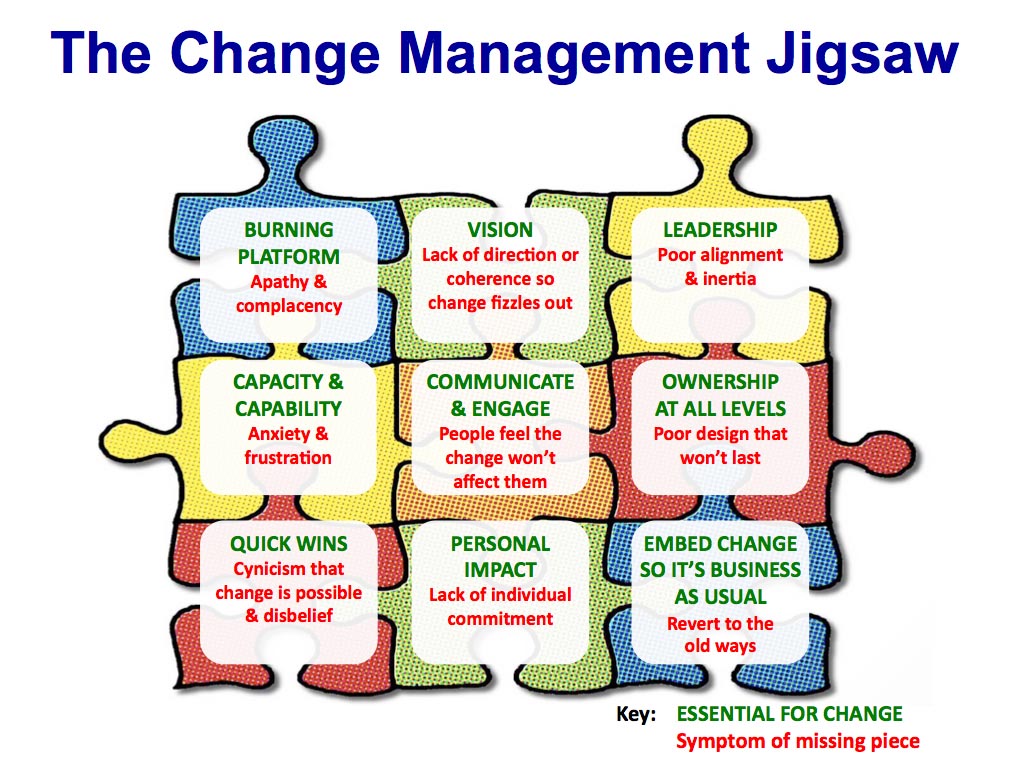
| |
|
|
Change programmes often go wrong and don’t deliver the improvements envisaged. In industry this failure rate is up to 70%. The nine pieces of the change management jigsaw show common symptoms of change programme failure, and the action needed to prevent problems occurring. You can use the jigsaw as a diagnostic tool by looking up the symptom and the corresponding action.
Burning platform. What is the compelling reason to change? Practitioners, leaders and partners must believe that they can’t go on without urgent change. People will often go to extraordinary lengths if they believe in the change. For example, you may want to connect change to the experience of services, inspection results or outcome improvements.
Vision. Effective change needs a clear vision for the future state that is compatible with your objectives and common across the whole organisation. Share your vision with everyone who might be affected by the change. Without a clear vision there will be confusion, poor planning and people will not be able to pull together to effect change. Visualise the impact of change on daily behaviour. How will it feel? What are the benefits? Sell your dream for change.
Leadership. You need strong, visible, leadership to incentivise support. Without effective leadership there is often little alignment between programme strands or services, and too much inertia.
Capacity & capability. Without time, finance and the skills to effect change the programme will falter, leading to a frustrated, de-motivated and stressed workforce who will be wary of future initiatives. Change programmes need to be practically planned and activities prioritised within available resources.
Communicate & engage. In industry there is a rule that to effect change you should communicate 10 times more than you feel is necessary. Use different channels, keep repeating the same simple message, but make it interesting and relevant. Seek regular feedback from your workforce, partners and customers. Be seen to act on feedback.
Ownership. at all levels Ownership by your workforce, partners, customers, etc. is required to find innovative or efficient ways of designing the new system. Identify and work closely with enthusiastic change agents who can drive improvements at all levels.
Quick wins. Often change programmes get bogged down by over-planning and little action. Always find quick and visible deliverables to make change real to your workforce, partners and customers. Quick wins bring buy-in and communicate the new ways of working.
Personal impact. A change programme that is based on rational arguments is only part of the answer. Change will affect people emotionally and may scare them. Try to understand individuals’ personal fears and goals. Find out what motivates them and show how they can make a difference.
Embed change so it’s business as usual. Too often people think they have implemented a change programme and stop, only to find their workforce, leaders and partners returning to their old ways of working. How are you planning to turn the changes into business as usual? Don’t let up!
|
|
|
|
|
|
|
|
|
| |
|
|